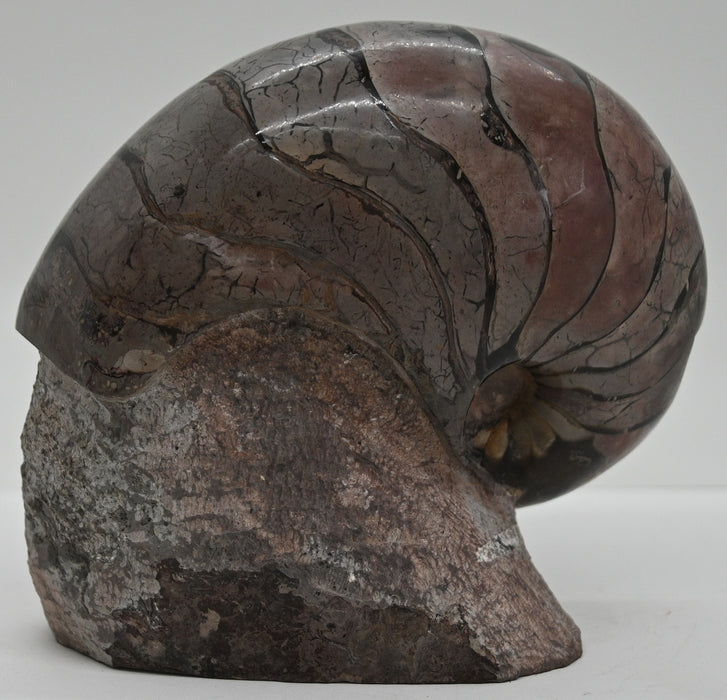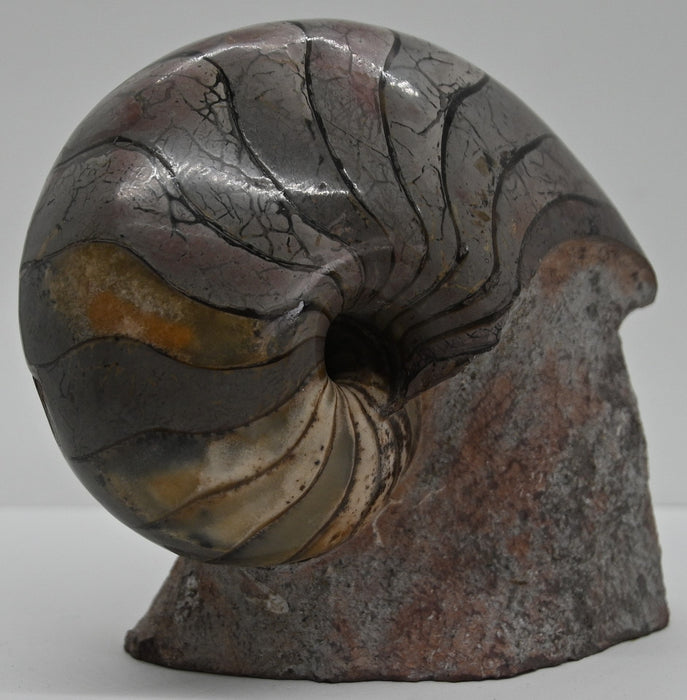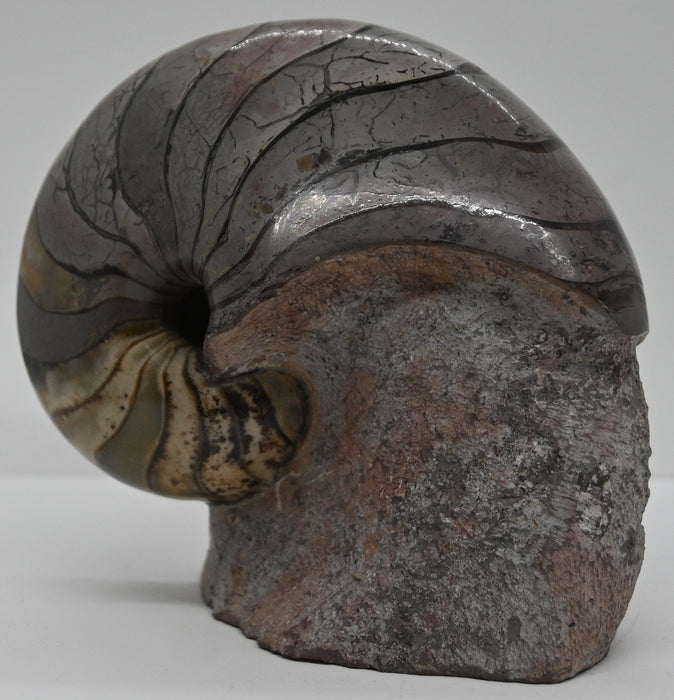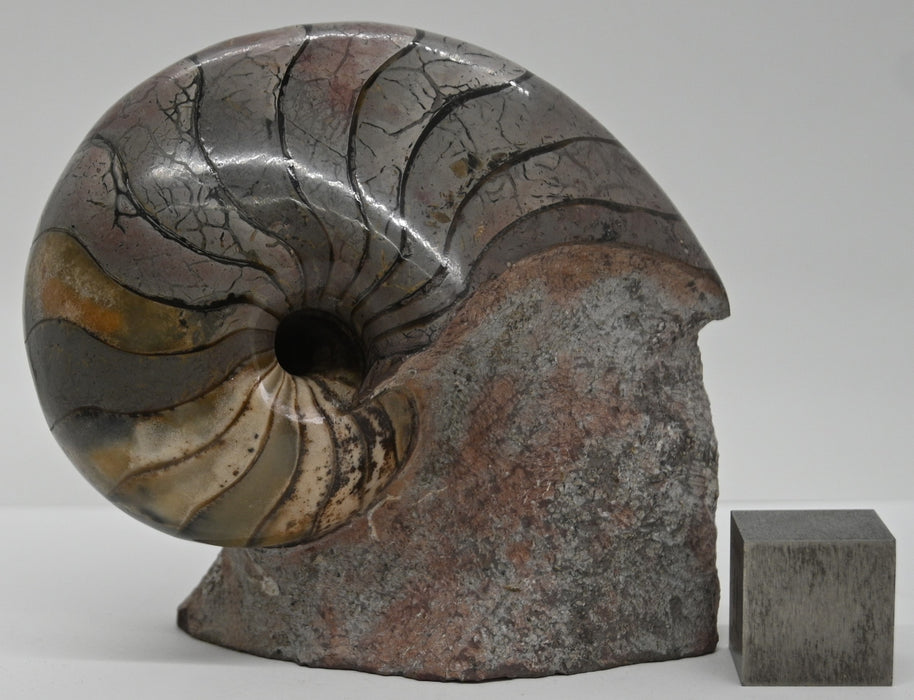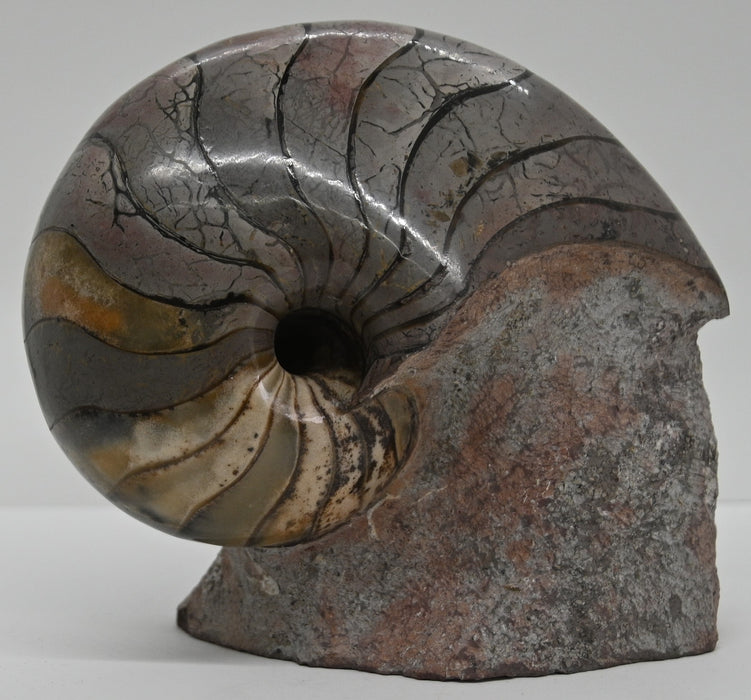
Nautilus Fossil | France
Cenoceras sp.
Jurassic (201-184 million years ago)
Belmont, France
Specimen approx. size: 5" x 4.5" x 3"
Cenoceras is an extinct genus of nautiloid cephalopods that thrived from the Late Triassic to the Early Cretaceous. It belongs to the order Nautilida, which includes modern nautiluses. This genus is among the most common and well-documented nautiloids from the Jurassic period.
Morphological Description
Cenoceras had a relatively simple, involute shell with a generally smooth or slightly ribbed surface. The shell was typically globose to moderately compressed, with a rounded to slightly flattened venter. Its sutures were simple and gently sinuous, lacking the complex lobes and saddles seen in ammonites. The siphuncle, which helped regulate buoyancy, was positioned near the center or slightly ventral within the shell.
Ecology and Lifestyle
Cenoceras is considered to have been a nektonic predator or scavenger, similar to modern nautiluses. It likely inhabited shallow marine environments, preying on small marine organisms like crustaceans and fish. The simple shell structure suggests that it was a relatively slow-moving swimmer compared to more streamlined ammonites.
Distribution and Fossil Occurrence
Fossils of Cenoceras have been found worldwide, particularly in Jurassic deposits of Europe, North America, and parts of Asia. The widespread occurrence of this genus suggests it was a successful and adaptable cephalopod in Mesozoic marine ecosystems.

